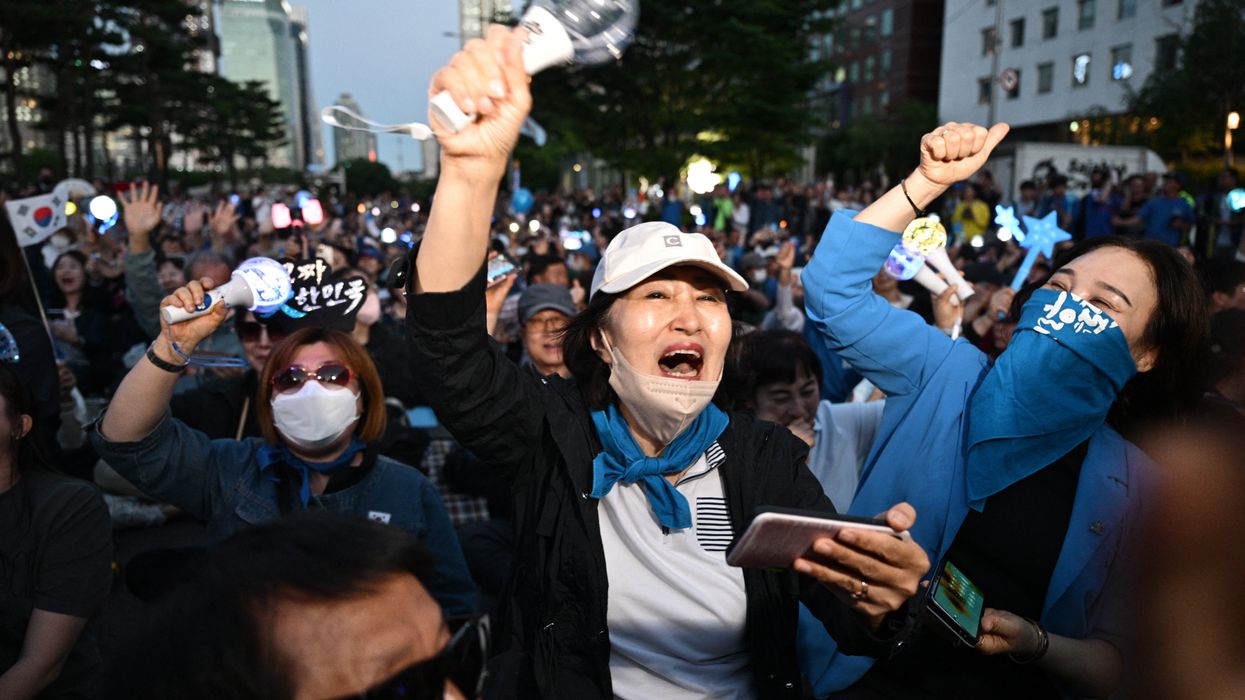475 Immigrants Arrested in Raid of Hyundai EV Plant in Georgia
A spokesperson for South Korea's foreign ministry said that "the economic activities of our companies investing in the US and the rights and interests of our nationals must not be unfairly violated."
The South Korean Ministry of Foreign Affairs on Friday expressed "concern and regret" after US agents arrested 475 immigrants at a Hyundai electric vehicle plant in Ellabell, Georgia and turned them over to Immigration and Customs Enforcement.
ICE was among several agencies involved in "the largest single-site enforcement operation in the history of Homeland Security Investigations," Steven Schrank, the special agent in charge for HSI Atlanta, said during a Friday morning press conference.
The immigrants worked for a variety of companies and were arrested "as part of an ongoing criminal investigation into allegations of unlawful employment practices," Schrank explained. The probe continues, but no criminal charges are being filed at this time.
While Schrank only confirmed that a large number of those arrested on Thursday are South Koreans, a diplomatic source told the news agency Yonhap that the figure is over 300.
Yonhap also reported on a press briefing in which a spokesperson for South Korea's foreign ministry, Lee Jae-woong, said that "the economic activities of our companies investing in the US and the rights and interests of our nationals must not be unfairly violated."
"We conveyed our concern and regret through the US Embassy in Seoul today," Lee added.
According to The Associated Press:
Hyundai Motor Group, South Korea's biggest automaker, began manufacturing EVs a year ago at the $7.6 billion plant, which employs about 1,200 people, and has partnered with LG Energy Solution to build an adjacent battery plant, slated to open next year.
In a statement to The Associated Press, LG said it was "closely monitoring the situation and gathering all relevant details." It said it couldn't immediately confirm how many of its employees or Hyundai workers had been detained.
"Our top priority is always ensuring the safety and well-being of our employees and partners. We will fully cooperate with the relevant authorities," the company said.
Hyundai's South Korean office didn't respond to AP's requests for comment. Forbes highlighted that the raid comes shortly after the company "announced it would invest $26 billion in the US over the next three years," which is expected to create 25,000 jobs.
During the Friday press conference, Schrank appeared to try to distinguish these arrests from President Donald Trump's mass deportation agenda, saying that "this was not an immigration operation where agents went into the premises, rounded up folks, and put them on buses—this has been a multimonth criminal investigation."
However, Tori Branum, a firearms instructor and Republican candidate for Georgia's 12th Congressional District who is publicly taking credit for the raid, made the connection clear.
"For months, folks have whispered about what's going on behind those gates," Branum wrote on Facebook. "I reported this site to ICE a few months ago and was on the phone with an agent."
"This is what I voted for—to get rid of a lot of illegals," she told Rolling Stone after the arrests. "And what I voted for is happening."
In addition to raids of other workplaces such as farms in California, Trump's mass deporation agenda has featured an effort to illegally deport hundreds of children to Guatemala over Labor Day weekend, masked agents in plain clothes ripping people off US streets, arresting firefighters while they were on the job, revoking Temporary Protected Status for various foreign nationals, and locking up immigrants in horrific conditions in facilities including "Alligator Alcatraz."
American Immigration Council legal director Michelle Lapointe, who is based in the Atlanta area, said in a Friday statement that "these raids don't make anyone safer. They terrorize workers, destabilize communities, and push families into chaos."
"This historic raid may make dramatic headlines, but it does nothing to fix the problems in our broken immigration system: a lack of legal pathways and a misguided focus on punishing workers and families who pose no threat to our communities," she added. "Raiding work sites isn't reform, it's political theater at the expense of families, communities, and our economy."
This article was updated with comment from the American Immigration Council.


